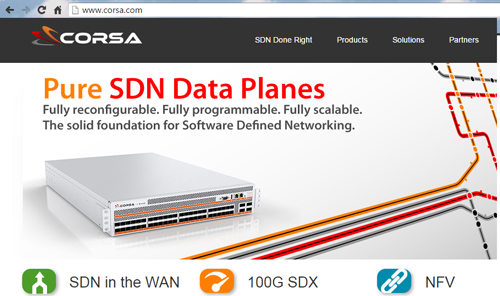 by Pejman Roshan, VP of product management at ShoreTel
by Pejman Roshan, VP of product management at ShoreTelWho knows what the future holds? Analysts look for the future in current trends, and businesses attempt to create it by meeting their customers’ present needs. At ShoreTel, we make no claims of omniscience, though we do boast a record of impressive foresight into the future of cloud communications, and strive to make that future a reality.
Hybrid UC
The future does not lie solely in the cloud or on-premises; rather, patterns point toward hybrid solutions being the way of the future. The cloud is an incredibly useful tool for storing, accessing, and managing virtualized applications and data. Yet at the same time, on-site phone systems still offer control, availability and resiliency that softphones can’t guarantee. Fortunately, the choice isn’t an either/or situation, and one can get both through a hybrid cloud communications platform.However, not all hybrid solutions offer the same balance of cloud and premises features, and are often weighted more toward one or the other – based in the cloud with some on-premises features, or vice-versa. So while hybrid will see more growth than cloud or premises solutions on their own, users will be free to decide what balance works best for them. Regardless of what they go with, though, there’s little doubt that vendors offering hybrid solutions will be set for success.
As communications become a blend of physical and virtual, the workspace will follow. The cloud will continue to expand as more users migrate to it, bringing their work and tools with them. Their own “personal” clouds will be a combination of the various components they need, so working virtually is as effective as working from a corporate office. We’re already seeing a continuous rise in mobility, and it shows no signs of slowing, which will lead to a growing virtual workspace that complements and works in tandem with the physical office.
BYOD and WebRTC
In order to support the mobile BYOD environment, applications that let people communicate through and between their various personal devices will be necessary. IT departments will need to put more focus on software apps for that, but technology like WebRTC will make it easier to launch Web collaboration meetings right from the client, which will in turn make it easier to create and join meetings.Yet no matter what tools you can use to work and communicate with, the user experience can make or break the technology. Now that technology is at the point where we can reach across cyberspace to work and collaborate from anywhere, it needs to be doable in a way that doesn’t drive users mad.
The way we see it at ShoreTel, the best way to provide a good user experience is through a good interface. You need a clean user interface, one that makes good use of space to remain clear and easy to use, which remains singular for different modes of communication. The less people have to switch between screens, apps and interfaces, the better the experience will be for them, which leads to improved efficiency and growth all around.
With all this advancement, what will Unified Communications become? It is our view that UC will advance beyond merely transmitting information back and forth, but will incorporate intelligent organization, providing vital context and sorting for the information transmitted. Unified Communications will continue to grow and incorporate both cloud and premises-based communication platforms and include an ecosystem of integrated applications.
The future is not some far-off thing these days; our predictions follow current trends to see what this year will contain, so in many regards, we are already living in it. It’s never too soon to prepare for what’s ahead, so the time is right to get ahead of the curve.
About the Author

Pejman Roshan is the VP of product management at ShoreTel, where he is responsible for product strategy, definition and delivery for ShoreTel’s unified communications cloud and premises product lines.
About ShoretTel
 ShoreTel, Inc. (NASDAQ: SHOR) is a leading provider of brilliantly simple IP phone systems and unified communications solutions. Its award-winning on-premises IP-PBX solution and cloud-based hosted phone system eliminate complexity and improve productivity. Recognized for its industry-leading customer experience and support, ShoreTel’s innovative business phones, application integration, collaboration tools, mobility, and contact center applications enable users to communicate and collaborate no matter the time, place or device, with minimal demand on IT resources. ShoreTel is headquartered in Sunnyvale, Calif., and has regional offices and partners worldwide. For more information, visit www.shoretel.com
ShoreTel, Inc. (NASDAQ: SHOR) is a leading provider of brilliantly simple IP phone systems and unified communications solutions. Its award-winning on-premises IP-PBX solution and cloud-based hosted phone system eliminate complexity and improve productivity. Recognized for its industry-leading customer experience and support, ShoreTel’s innovative business phones, application integration, collaboration tools, mobility, and contact center applications enable users to communicate and collaborate no matter the time, place or device, with minimal demand on IT resources. ShoreTel is headquartered in Sunnyvale, Calif., and has regional offices and partners worldwide. For more information, visit www.shoretel.com
Got an idea for a Blueprint column? We welcome your ideas on next gen network architecture.
See our guidelines.
See our guidelines.


















